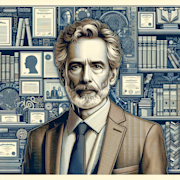Steinbeck's East of Eden: The Epic Journey of Family and Fate

John Steinbeck’s novel, East of Eden, is a masterpiece that explores the intricacies of family dynamics and the eternal struggle between good and evil. Set in the Salinas Valley of California, the novel follows the intertwined destinies of the Trask and Hamilton families across generations. With its richly drawn characters and complex narrative structure, East of Eden has captivated readers for generations. In this blog post, we will delve into the themes and symbolism of the novel, as well as the enduring legacy of Steinbeck’s magnum opus.
The Symbolism of the Landscape
One of the most striking elements of East of Eden is its vivid depiction of the Salinas Valley. Steinbeck uses the landscape as a powerful symbol throughout the novel, reflecting the characters’ emotional journeys and moral dilemmas. The fertile valley represents the promise of a new beginning, while the barren, rocky terrain embodies the struggles and hardships faced by the characters. As the Trask and Hamilton families navigate their respective fates, the changing landscape serves as a mirror to their inner conflicts and outer challenges.
The Struggle Between Good and Evil
At the heart of East of Eden lies the eternal conflict between good and evil. The novel is structured around the biblical story of Cain and Abel, with the characters of Adam and Charles Trask echoing the rivalry and jealousy of the original brothers. Steinbeck explores the complexities of human nature, portraying characters who are capable of both great kindness and unfathomable cruelty. Through the moral choices and actions of the Trask and Hamilton families, the novel grapples with the age-old question of free will versus fate.
Family and Identity
Central to East of Eden is the theme of family and identity. The characters are shaped by their relationships with parents, siblings, and offspring, each generation inheriting the sins and virtues of those who came before. As Adam Trask struggles to connect with his sons, Cal and Aron, he grapples with his own unresolved past and the legacy of his ancestors. The novel explores the complexities of parent-child relationships and the ways in which individuals define themselves in relation to their family history.
Redemption and Forgiveness
Despite the darkness and tragedy that pervade East of Eden, Steinbeck ultimately offers a message of redemption and forgiveness. Characters like Cal Trask, who grapples with his inner demons and struggles to overcome his violent impulses, are given the opportunity for self-discovery and personal growth. Through acts of grace and compassion, the characters in the novel find a path towards redemption and healing. East of Eden reminds us that even in the face of overwhelming despair, there is always the possibility of forgiveness and renewal.
Legacy and Influence
Since its publication in 1952, East of Eden has endured as a classic of American literature. The novel continues to resonate with readers of all ages, offering a timeless exploration of the human experience. Steinbeck’s epic saga of family and fate invites us to confront our own moral choices and confrontations with destiny. As we journey alongside the Trask and Hamilton families, we are reminded of the enduring power of love, forgiveness, and the quest for a meaningful existence.
In conclusion, East of Eden stands as a monumental achievement in Steinbeck’s literary career, a testament to the enduring power of storytelling and the depths of the human soul. Through its exploration of family, fate, and the eternal struggle between good and evil, the novel challenges us to reflect on our own lives and values. As we navigate the twists and turns of our own existence, East of Eden remains a beacon of hope and inspiration, guiding us towards a deeper understanding of ourselves and the world around us.

Johnathan Evans
Journalist
More From Classics Authority Books

Book
The Red Badge of Courage by Stephen Crane

Book
Peter Pan by J.M. Barrie

Book
The Fountainhead by Ayn Rand

Book
Exploring the Depths: Jules Verne's Twenty Thousand Leagues Under the Sea

Book
The Power of Satire: Jonathan Swifts Gullivers Travels

Book
Understanding the Existential Themes in Albert Camus The Stranger





